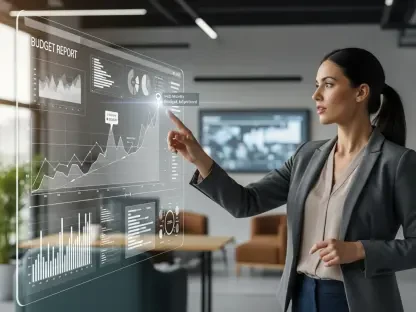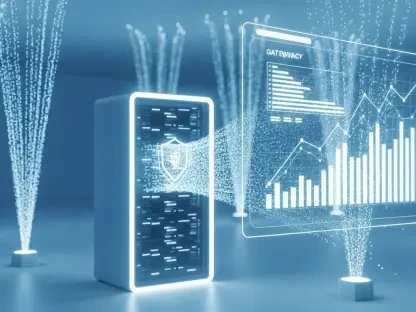Imagine a world where a customer strolling down a bustling city street receives a personalized discount for their favorite coffee just as they pass a nearby café. This isn’t a futuristic fantasy but a reality powered by geofencing marketing technology, a tool that’s reshaping how businesses connect with consumers in real time. With mobile commerce driving retail sales past $2.5 trillion annually, location-based strategies have become indispensable for capturing attention in a crowded market. This review delves into the intricacies of geofencing, examining its mechanisms, benefits, real-world applications, and the challenges it faces, while offering a glimpse into its transformative potential for industries like retail and hospitality.
Understanding Geofencing Marketing Technology
Geofencing marketing operates as a location-based tactic that sends targeted communications to users when they enter or exit specific geographic zones. By leveraging technologies such as GPS, Wi-Fi, cellular data, and Bluetooth beacons, it tracks user locations with remarkable precision. This enables businesses to engage customers at the most opportune moments, whether they’re near a store or passing through a designated area.
The significance of this technology cannot be overstated in a mobile-centric era where consumers expect instant, relevant interactions. Geofencing enhances customer engagement by delivering messages that resonate with immediate needs, ultimately driving foot traffic to physical locations. As competition intensifies in retail, this strategy offers a way to stand out by creating a seamless bridge between digital outreach and in-person experiences.
Core Components and Mechanisms of Geofencing
Location Tracking Technologies
At the heart of geofencing lies a suite of location-tracking tools that ensure accurate detection of user movements. GPS provides broad coverage, making it ideal for larger zones like drive-time areas, while Wi-Fi and cellular data excel in dense urban settings where precision is key. For indoor environments, such as malls or airports, RFID and Bluetooth beacons offer pinpoint accuracy, enabling businesses to target users within specific sections of a building.
These technologies collaborate to create a robust system for monitoring real-time location data. By integrating multiple sources, geofencing platforms can adapt to various scenarios, ensuring that triggers activate reliably whether a user is outdoors or inside a complex structure. This versatility forms the backbone of effective location-based marketing campaigns.
Virtual Perimeter Setup and Triggers
Creating a geofence involves defining virtual boundaries around real-world locations using specialized software. These perimeters can take simple forms, like a circular radius around a store, or be customized to match intricate shapes, such as the exact footprint of a building. Businesses have the flexibility to tailor these zones to align with specific marketing goals, whether targeting a single venue or multiple locations.
Triggers are the mechanisms that activate messages based on user behavior within these zones. Common options include entry triggers, which send notifications when a user crosses into a geofence, exit triggers for when they leave, and dwell-time triggers that activate after a user remains in an area for a set period. The seamless integration with mobile devices ensures that these messages are delivered promptly, maximizing their relevance and impact.
Recent Advancements in Geofencing Marketing
Geofencing technology has seen significant strides in recent years, particularly in the accuracy of location tracking on mobile devices. Enhanced precision allows for more granular targeting, ensuring that messages reach users at the exact moment they’re most likely to act. This improvement has been complemented by the integration of customer data, enabling hyper-personalized content that resonates on an individual level.
Another notable trend is the adoption of unified commerce platforms, which combine geofencing with broader retail tools. These systems streamline operations by syncing location-based campaigns with inventory data and customer profiles, creating a cohesive marketing approach. Additionally, evolving consumer preferences for localized, immediate offers have accelerated the technology’s uptake, pushing businesses to refine their strategies accordingly.
The convergence of geofencing with other digital innovations, such as advanced analytics, also marks a pivotal shift. Retailers can now measure campaign effectiveness in real time, adjusting tactics based on foot traffic patterns and engagement metrics. This data-driven evolution positions geofencing as a cornerstone of modern marketing, with room for even greater sophistication in the coming years from 2025 onward.
Real-World Applications of Geofencing Marketing
Geofencing has proven its versatility across diverse industries, with retail and hospitality leading the charge in innovative implementations. In retail, campaigns like Burger King’s “Whopper Detour” exemplify competitor conquesting, where geofences around rival locations triggered offers to lure customers away with a near-irresistible deal. Such strategies highlight the power of location-based tactics in redirecting consumer behavior.
Hospitality businesses have also harnessed geofencing to great effect, as seen with HotelTonight’s drive-time discounts. By targeting users within a certain radius of participating hotels after a specific time, the platform offers tailored rate reductions, incentivizing bookings from nearby travelers. This approach not only boosts conversions but also caters to the spontaneous nature of modern travel planning.
Beyond these sectors, geofencing enhances in-store experiences through precise footprint targeting, as demonstrated by Sephora’s “Store Companion” feature. Upon entering a store, customers gain access to personalized recommendations and event details via their app, transforming a routine visit into an interactive journey. These varied applications underscore geofencing’s ability to drive traffic, customize offers, and elevate customer satisfaction across multiple touchpoints.
Challenges and Limitations of Geofencing Technology
Despite its advantages, geofencing marketing faces significant hurdles, particularly around privacy concerns. A substantial portion of the population—62% of Americans—expresses unease about data collection practices, raising questions about consent and transparency. Addressing these apprehensions through clear opt-in mechanisms and ethical data handling remains a critical priority for widespread acceptance.
Legal restrictions further complicate deployment, with certain areas, such as those near healthcare facilities, imposing strict limitations on geofencing activities. Technical issues, including inconsistent trigger accuracy and delays in message delivery, can also undermine campaign effectiveness. Businesses must navigate these obstacles while ensuring compliance with regional regulations to avoid potential backlash or penalties.
Market barriers add another layer of complexity, with costs escalating in larger urban centers due to higher targeting precision and audience density. Additionally, in-store staff readiness for promotions triggered by geofencing campaigns often lags, risking customer frustration at the point of sale. Ongoing efforts to refine technology and build user trust through transparent practices are essential to overcoming these challenges.
Future Outlook for Geofencing Marketing
Looking ahead, geofencing technology holds immense promise as it integrates with cutting-edge tools like artificial intelligence for predictive targeting. Such advancements could anticipate consumer movements and preferences, delivering messages before a user even enters a geofence. This proactive approach may redefine how businesses engage with their audiences, making interactions more intuitive and effective.
Broader adoption across non-retail sectors, such as event management and public services, also appears likely. Imagine geofencing alerting attendees to real-time updates at a festival or guiding citizens to nearby emergency resources during a crisis. These applications could expand the technology’s societal impact, extending its relevance beyond commercial objectives.
Improvements in location precision and data integration are expected to further enhance geofencing’s capabilities between 2025 and 2027. As retail engagement continues to prioritize hyper-local strategies, this technology will likely play a central role in crafting personalized customer experiences. Its evolution promises to shape the future of marketing by bridging physical and digital realms with unprecedented accuracy.
Conclusion and Overall Assessment
Reflecting on this exploration, geofencing marketing emerges as a potent instrument for hyper-targeted advertising, delivering unmatched customer insights and superior conversion rates. Its ability to connect with users at critical moments proves invaluable for retailers aiming to boost local traffic. The technology’s capacity for personalization and real-time engagement stands out as a key strength during this analysis.
Moving forward, businesses should prioritize integrating geofencing with robust data systems to maximize its potential, while addressing privacy concerns through transparent practices. Exploring partnerships with unified commerce platforms could streamline operations, ensuring campaigns align with inventory and customer trends. As geofencing continues to evolve, staying ahead of regulatory shifts and investing in staff training will be crucial steps to sustain its effectiveness in transforming local marketing landscapes.









